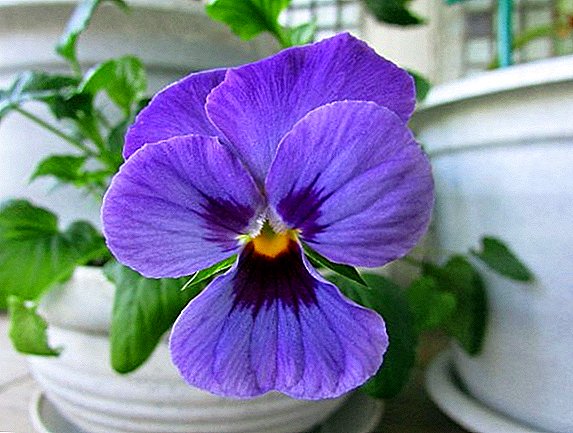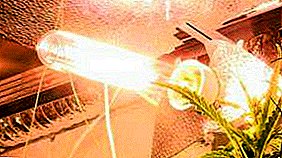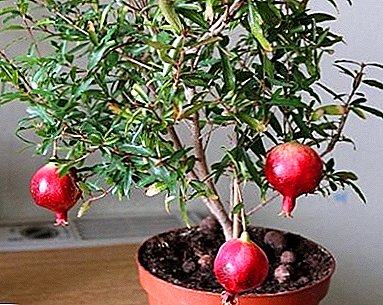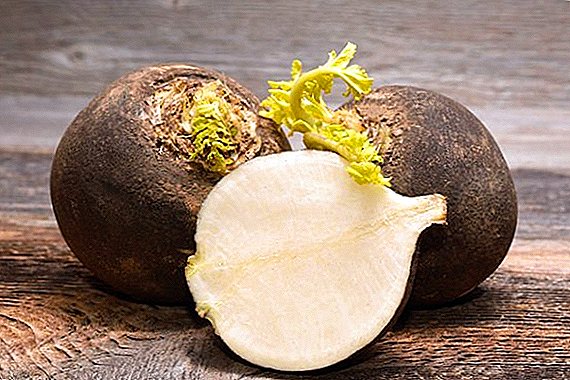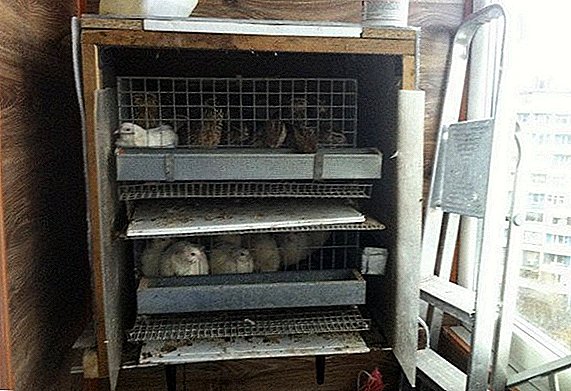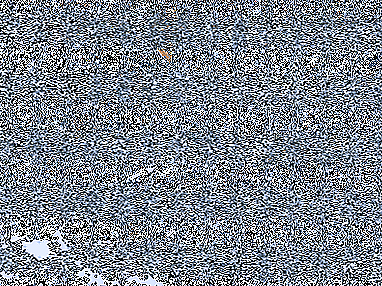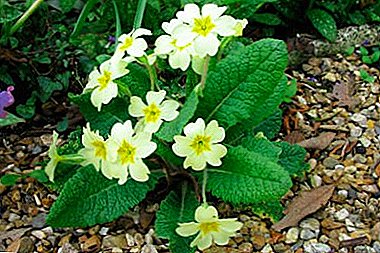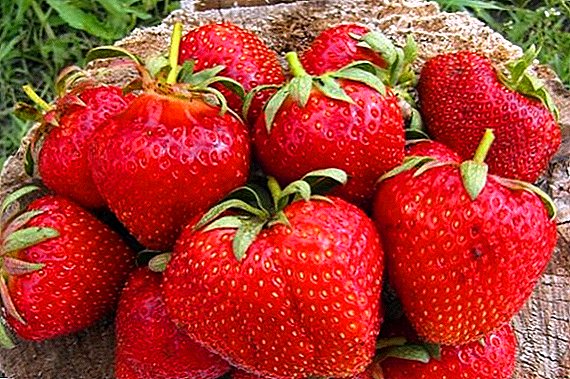 Strawberry variety "Cardinal" is popular with summer residents. It can be easily recognized by its appearance, which somewhat distinguishes this berry from its relatives. Besides, she brings quite large berries. This variety is the result of the work of breeders from America. How to grow it in your summer cottage, read our article.
Strawberry variety "Cardinal" is popular with summer residents. It can be easily recognized by its appearance, which somewhat distinguishes this berry from its relatives. Besides, she brings quite large berries. This variety is the result of the work of breeders from America. How to grow it in your summer cottage, read our article.
Description and characteristics
Let's get acquainted with the variety of garden strawberries (that is the correct name for strawberries) "Cardinal" closer. It has bushes up to 45 cm in height, there are few leaves on them. The top plate of leaves is colored dark green, the bottom has a bluish tint. In shape, they resemble a boat.
On bushes form long antennae, which have the ability to root poorly. Those sockets that have already borne fruit will no longer be able to grow and bear fruit. For planting should be used only faded or very young sockets.
Fruiting in "Cardinal" comes early - in the first half of June, you can already taste delicious, large berries. Last fruits can be found in October. On average, the weight of each of them reaches 70-80 g.  They are dark red in color with shine. The structure is dense. In shape - oval. Have a pleasant aroma. The flesh is juicy. In the middle of a strawberry there is an incompletely filled core.
They are dark red in color with shine. The structure is dense. In shape - oval. Have a pleasant aroma. The flesh is juicy. In the middle of a strawberry there is an incompletely filled core.
The taste of the berries is sweet and sour. They crunch in the mouth when biting. On the dessert scale, "Cardinal" received a score of 4.4-5 points. They are suitable for long-term storage and transportation over long distances. In this aspect, the grade received a score of 4.6-5 points.
Familiarize yourself with the cultivation of strawberry varieties such as Tristan, Black Prince, Kama, Alba, Honey, Clery, Eliana, Maxim, Tsaritsa, Kimberly, "Marshal", "Lord", "Russian size", "Zeng Zengana".
The yield of this variety is high - about a kilogram of strawberries are harvested from one bush per season. During the final fruiting, the berries grow larger than during the first fruiting.
Plants are resistant to diseases such as spotting and gray rot. When improperly grown, they often suffer from powdery mildew. Their cold resistance is good - they can withstand temperatures of up to -16 degrees, although frost below -8 is terrible for the roots. Berries are used for fresh consumption, as well as for canning, jam. 
Did you know? The largest strawberry in the world was raised by Japanese farmer Koji Nakao. Its weight was 250 g, and the dimensions in the circumference - 25 cm. Berry was estimated by the compilers of the Guinness Book of Records, making an entry about it on the pages of the publication.
Breeding
It is possible to propagate garden strawberries in several ways. The most popular among them are:
- antennae;
- division of the bush;
- seminal way.
For reproduction, you should select the second-order antennae in the outlet. Their landing is carried out in April. Antennae are planted in separate pots. Those whiskers that are not needed for reproduction are best cut so that they do not take the necessary nutrients from the parent plant.
Whiskers should stay in pots until they have strong roots. As a rule, four to six leaves will appear on young plants. Seedlings are separated from the parent bush and together with a clod of earth they are planted in a permanent place. Immediately after planting it is well watered.  Whiskers can be immediately dropped in between the rows. From each bush, no more than two antennae are taken, and the rest are removed. After some time, they will give rosettes with leaves and begin to take root. During the rooting period, the ends of the whiskers should be removed, leaving the first, strongest outlet.
Whiskers can be immediately dropped in between the rows. From each bush, no more than two antennae are taken, and the rest are removed. After some time, they will give rosettes with leaves and begin to take root. During the rooting period, the ends of the whiskers should be removed, leaving the first, strongest outlet.
At the end of the summer, a week before the jigging of young plants is planned, one should separate the rooted mustaches from the mother bushes. They need to pritenit and pour. After some time, you can land on a permanent place.
Important! Seasoned gardeners are advised to use specially selected bushes for breeding with a mustache, which should not be involved in fruiting. They are selected in the first year after fruiting, giving preference to those that brought the largest berries, the best endured difficulties and proved to be resistant to diseases.The method of dividing the bush is used for three to four-year-old strawberries. Well-developed bushes are selected and in the spring or autumn period they are divided with a sharp knife. Each separated bush should have three leaves and one intact horn. In this form, the bushes are planted in a permanent place.
Seed method is used mainly by breeders. Summer residents, it does not fit, because the properties of the mother bush are not always transferred to young plants. To carry it out, you need to collect ripe berries. Then they are cut off the outer layer and dried.
Seeds are easily separated from dried berries. Germination of them persists for four years. For seedlings, seeds are planted in the first month of spring in a container with soil, which is placed in a warm, well-lit room with daylight. Periodically moisten the soil with seeds by spraying.
The first shoots are shown from the ground in about a month. They grow until two or three sheets are formed. Then the seedlings dive, pinch the root and sit in separate pots. The shoots are transferred to a permanent place in May. Usually at this time they already have more than six sheets. 
Terms and rules of landing
In order for strawberries to yield generous yields, it is necessary to adhere to a few rules when planting and to satisfy its needs in terms of the composition of the land, the amount and volume of watering.
You will probably be interested to know how often you need to water strawberries, as well as how to organize automatic drip irrigation.
Strict planting strawberries "Cardinal", no. However, it is recommended to place it in the ground between August 20 and September 15. Planted at this time, the plant will have enough time to adapt to the ground, take root before the onset of cold weather.
The soil for growing "Cardinal" must be sandy or loamy, with a high content of nutrients and a weak acid reaction - 5-6 pH.
Important! Strawberries will not grow in poor clay soils. In sandy soil, its yield will decrease significantly, and the fruits are crushed. It is necessary to reclaim the land for one or two months before planting.

To plant this variety in two ways:
- Single line
- Two-line.
With a single-line distance between the bushes is 15-25 cm, between the rows - 60-80 cm. With a two-line landing between the tapes, 70 cm are left, the line spacing is 30 cm.
If your land is characterized by close groundwater, it is necessary to plant garden strawberries on the ridges. Two rows of bushes are planted, the standard distance between them is maintained.
Proper planting of strawberries is as follows:
- Choose a light area, protected from drafts. The forerunners of garden strawberries can be onions, cabbage, beets.
- Cooking holes for seedlings.
- We water them.
- We take rooted sockets and plant them so that the apical bud is located at ground level.
- Landing water.
- Mulch the soil around the bushes with organic matter - straw or sawdust. Also suitable dark film.
How to care
In addition to proper planting, care for strawberries is equally important. We offer you to get acquainted with the recommendations on the implementation of the necessary measures depending on the growing season.
In April, you need to cut dry leaves and peduncles, whiskers. Scissors are used for this procedure. Also during this period, prophylactic treatment against diseases and pests of Bordeaux liquid, Horus or other means that have the same effect will be required.
In the first weeks of May, you will need to re-spraying. Also the main care activities during this period will be:
- weeding;
- soil loosening;
- hilling bushes;
- mulching with organic substances.

From June harvest begins. Watering during this period should be carried out in the evenings, after the end of the harvesting of ripe strawberries. At the same time, it is necessary to remove peduncles on uterine bushes and whiskers on all plants.
We recommend that you read about how to care for strawberries after harvesting, as well as how to trim the leaves and mustache of strawberries and when to harvest them.
In July, before re-flowering and after it, it is necessary to re-apply sprays against diseases and pests. It is allowed to use the fungicides "Kvadris", "Topsin M", "Cavit" and the insecticides "Aktellik", "Teldor", "Calypso". At the same time, nitrogen-and phosphorus-containing fertilizers are fertilized.
From July to August carry out top dressing, but now alternate organic and mineral fertilizers. Produce precipitation and rooting outlets. If necessary, conduct spraying against diseases and pests.
As for irrigation, an abundant high-quality harvest can be obtained only with regular wetting of the soil and keeping it moist. Water for irrigation should be warm - at least 20 degrees. In too hot and dry days, you can please the plant with sprinkling.  However, it can be produced only before the appearance of peduncles. In the future, allowed only basal irrigation. Watering is necessary in the early morning or in the evening to avoid sunburn of the leaves. In order to avoid frosting of young bushes for them you can make shelters of nonwoven materials.
However, it can be produced only before the appearance of peduncles. In the future, allowed only basal irrigation. Watering is necessary in the early morning or in the evening to avoid sunburn of the leaves. In order to avoid frosting of young bushes for them you can make shelters of nonwoven materials.
With the right care, you can enjoy delicious, fragrant and large berries from the bushes for three or four years. In the future, you will need to update the landing.
Did you know? Strawberry is the only berry, in which the seeds are placed not in the middle, but outside.
Disease control
We have already mentioned that the variety "Cardinal" is famous for its resistance to gray rot and spotting. However, other diseases can affect it.
Often the bushes suffer from anthracnose or verdigris - a serious illness, due to which you can lose up to 80% of the crop. This fungal disease affects leaves, stems, flowers and fruits. Manifested in the form of red-brown spots, gradually growing into ulcers, and merging into one spot.  Gradually, leaf by leaf, flower by flower, fruit by fruit, infection kills the whole plant. The reasons for the development of the disease are increased humidity, potassium and phosphorus deficiency, too acidic soil. Therefore, it is important not to overmoisten the soil and produce timely fertilizing.
Gradually, leaf by leaf, flower by flower, fruit by fruit, infection kills the whole plant. The reasons for the development of the disease are increased humidity, potassium and phosphorus deficiency, too acidic soil. Therefore, it is important not to overmoisten the soil and produce timely fertilizing.
To prevent the development of anthracnose, you need to take care of planting healthy seedlings - it must be processed, soaking in fungicide for half an hour. Preventive sprays are carried out three to four times per season. Apply the fungicides allowed for strawberry.
We advise you to read about how to independently determine the acidity of the soil at the site, as well as how to deoxidize the soil.
Powdery mildew is also no less dangerous disease, which also often affects strawberries. This fungal disease affects all terrestrial organs of the plant. They are covered with white cobwebs with fungal spores.
The fungus appears in the thickened plantings, where there is poor air circulation, in the weeds-weed beds. Favorable conditions for its development are high humidity (70%) and temperature (+ 18 ... +23 degrees). Also, the fungus is actively developing in the area where there is an excess of nitrogen.  With powdery mildew, the leaves roll up, turn brown, and then dry. Berries crack, grow moldy and dry out. If the fungus enters the greenhouse, then most of the crop can be lost, since the disease develops rapidly in an enclosed space.
With powdery mildew, the leaves roll up, turn brown, and then dry. Berries crack, grow moldy and dry out. If the fungus enters the greenhouse, then most of the crop can be lost, since the disease develops rapidly in an enclosed space.
To avoid powdery mildew, it is necessary to purchase seedlings in proven places. Strawberries should be planted sparsely - in accordance with the recommendations.
It is important to perform regular examinations of the bushes in order to eradicate the disease at the initial stage, weeding, regular irrigation, preventive fungicidal spraying. If the infection could not be avoided, apply the spray Quadris or Fundazol.
Of the pests, the nematode is the greatest danger for strawberries - a worm that damages the surface parts of the plant. For the prevention of the appearance on the strawberry beds of this parasite, marigolds are planted around, the smell of which deters the pest. With the defeat of all damaged plants are removed by burning.  So, strawberry "Cardinal" refers to the early varieties, which has several advantages. Among them: large berries, good preservation of fruits, high yield, resistance to gray decay and spotting, long-term fruiting, good winter hardiness.
So, strawberry "Cardinal" refers to the early varieties, which has several advantages. Among them: large berries, good preservation of fruits, high yield, resistance to gray decay and spotting, long-term fruiting, good winter hardiness.
The disadvantages of this garden strawberry variety are as follows: defeat of powdery mildew, problems with reproduction due to the small number of outlets that can bear fruit next year. Nevertheless, the "Cardinal" - garden strawberries, which is worthy to take a bed of any summer resident. It is easy to grow, and it gives a lot of fruit for a long time.


